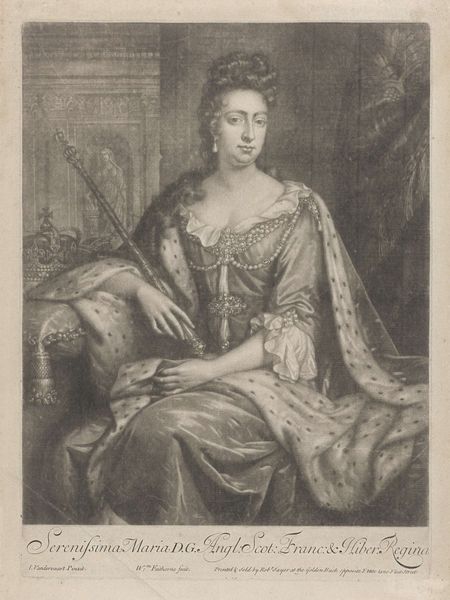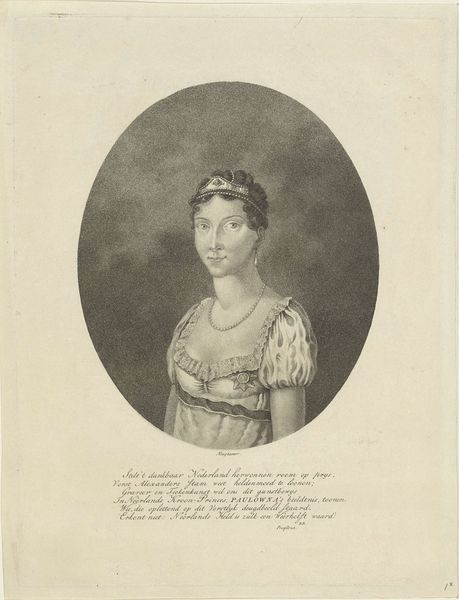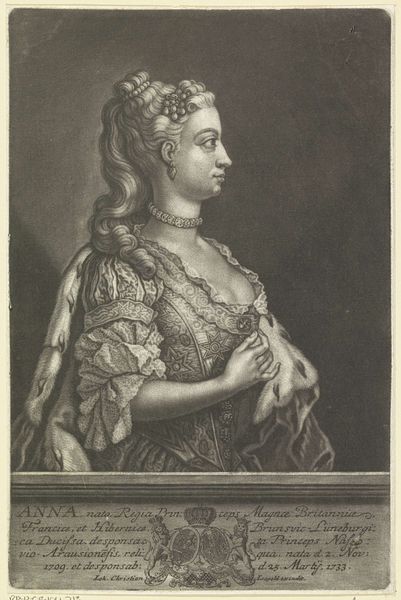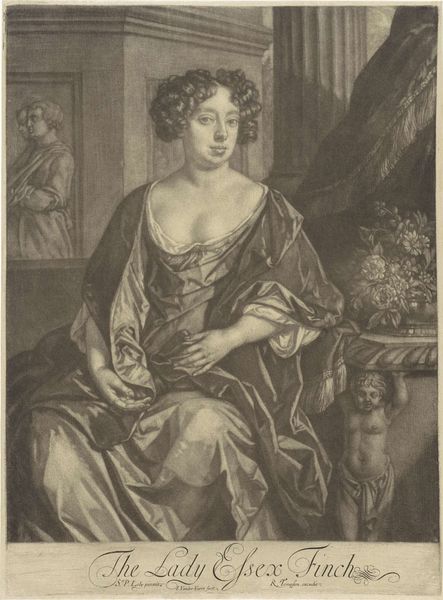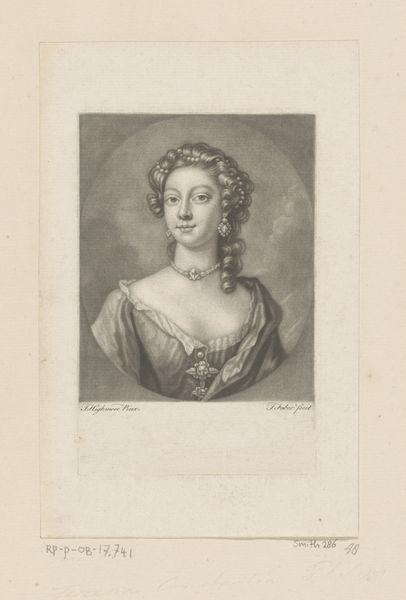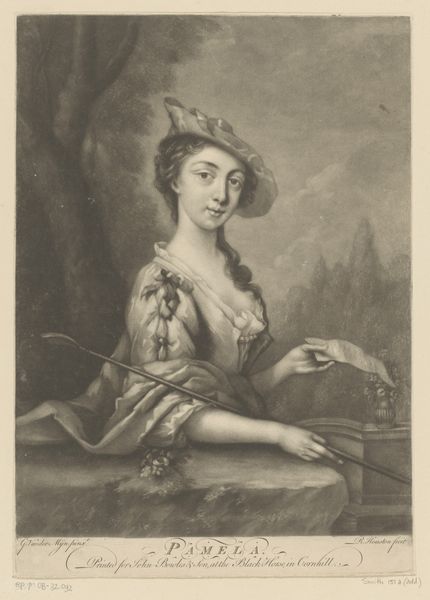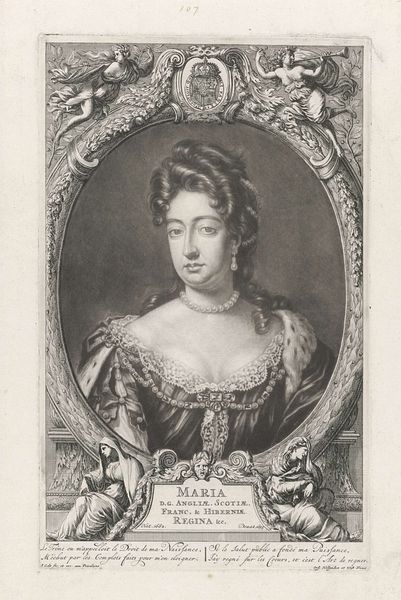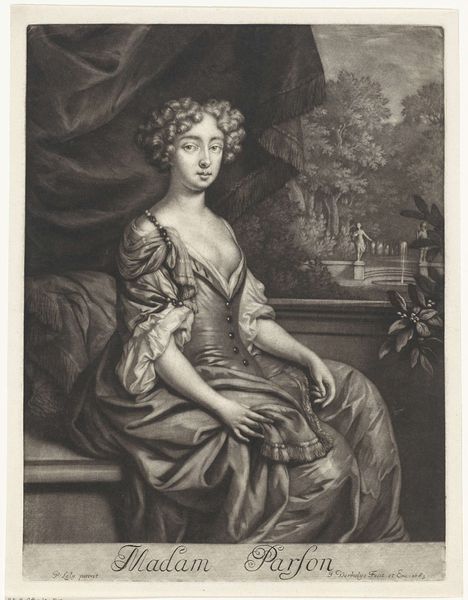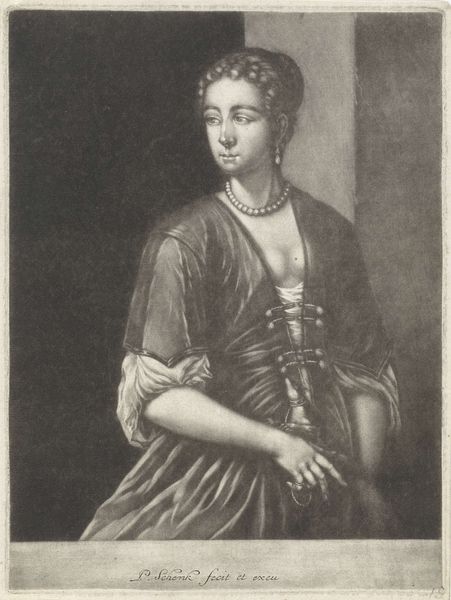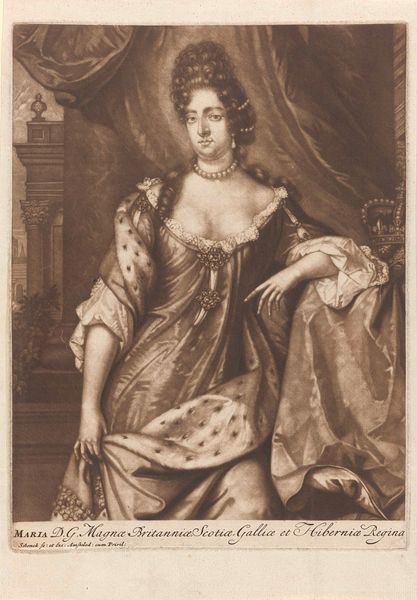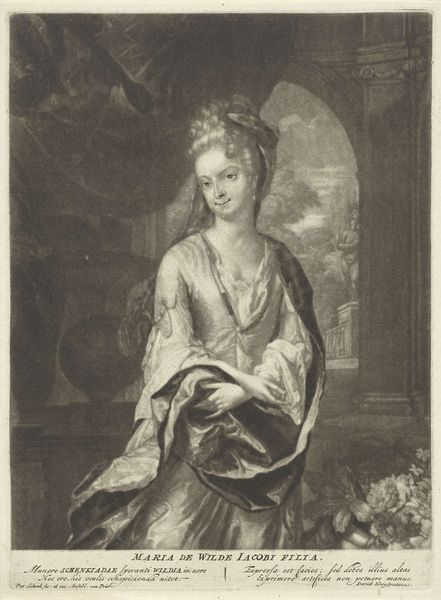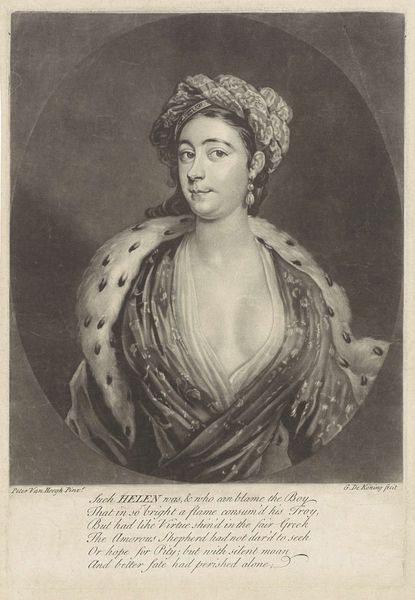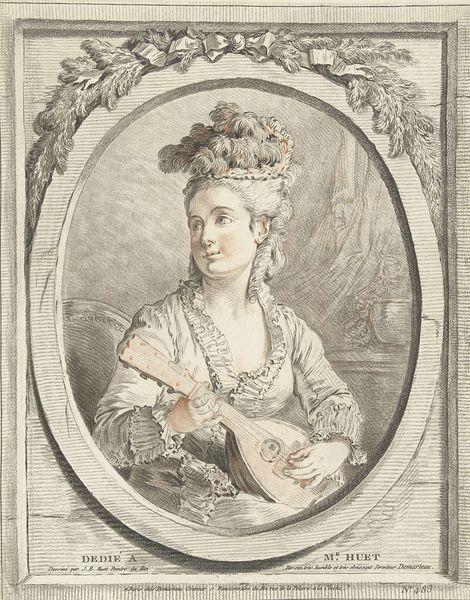
Portret van Hortense Eugénie de Beauharnais, koningin van Holland 1806 - 1837
0:00
0:00
engraving
#
portrait
#
neoclacissism
#
historical photography
#
historical fashion
#
portrait reference
#
19th century
#
history-painting
#
engraving
Dimensions: height 393 mm, width 278 mm
Copyright: Rijks Museum: Open Domain
Charles Howard Hodges created this portrait of Hortense Eugénie de Beauharnais, Queen of Holland, using the technique of mezzotint. This print, held in the Rijksmuseum, raises questions about the politics of imagery and the role of art in legitimizing power. Hodges, an Englishman working in the Netherlands, likely made this portrait to circulate among the elite. The print flattens the image into tonal gradations, a visual code that speaks to the sitter's status, and it is through such portraits that the image of royalty was maintained and disseminated. But we can also consider how the institutions of art making contributed to the Queen's construction as a public figure. The mezzotint technique itself, with its reliance on laborious process, suggests a kind of value and permanence. The image's meaning is contingent on these social and institutional contexts. To better understand it, we might turn to sources such as letters and diaries of the period, studies of print culture, and institutional records of royal portraiture.
Comments
No comments
Be the first to comment and join the conversation on the ultimate creative platform.
